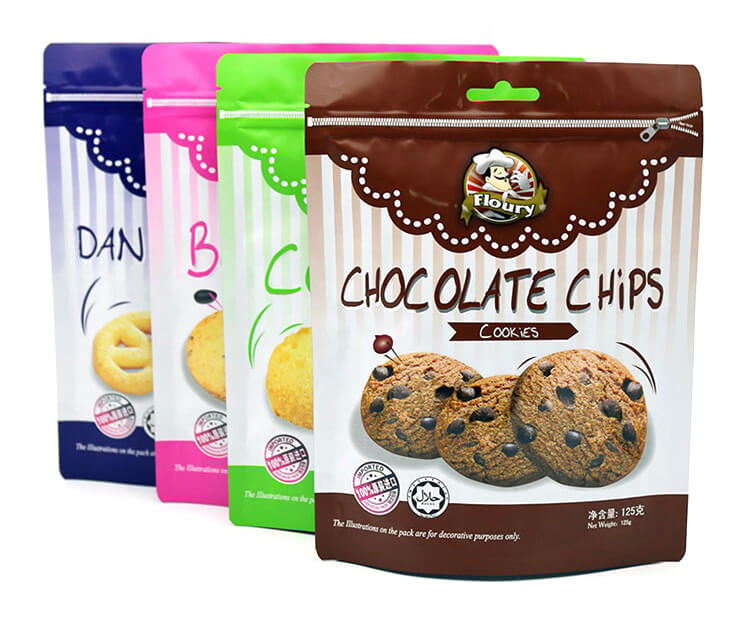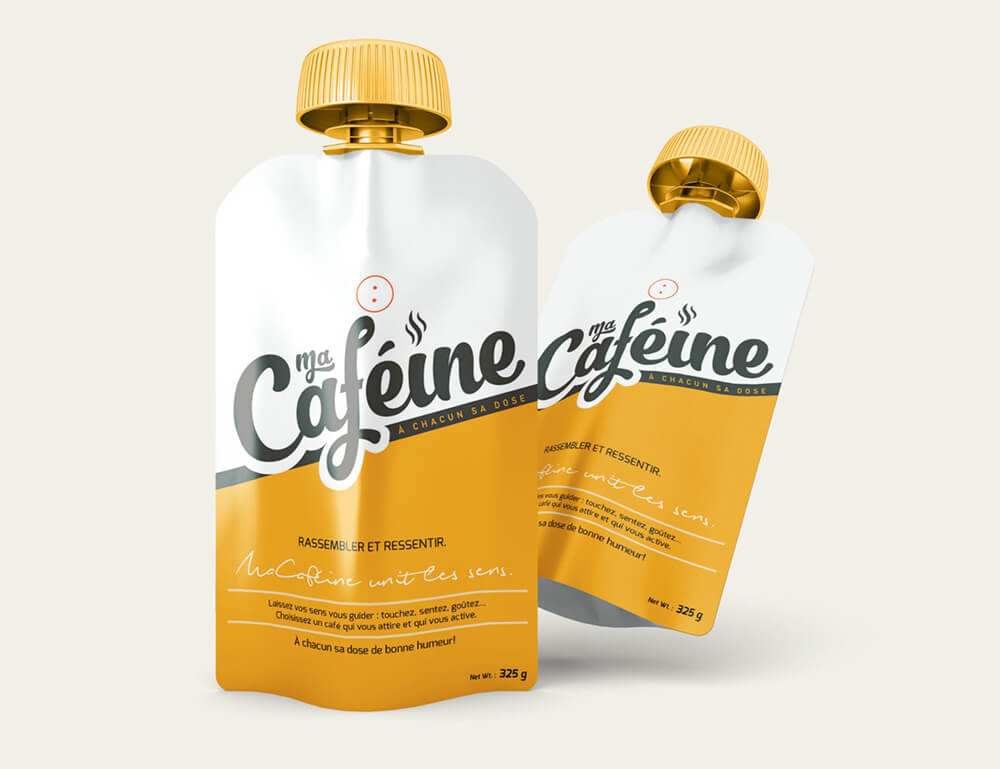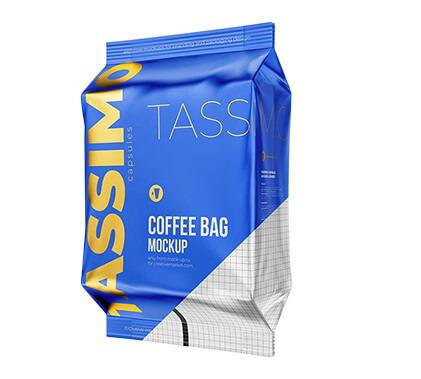Food packaging is important when it comes to the freshness, convenience, and safety of your product. Food items must be protected and preserved with highly damage-resistant flexible food packaging solutions that can survive the harshest environments. It's also vital to assist farmers and brand owners in protecting their food throughout the value chain in order to reduce food waste.
One of the main challenges for many foods and beverage firms has always been standing out in a crowded market. Bold, innovative, and eye-catching Packaging is one of the easiest ways to do this. It all comes down to making containers that stand out on a shelf. For many, this involves switching to flexible packaging options in addition to a smart design and branded color pallets.
Flexible Packaging's creative component has undoubtedly contributed to its recent growth and success. Many organizations, however, are turning to flexible Packaging for anything from shipping needs to food and beverage containers for a variety of reasons. Flexible Packaging is very useful in businesses that demand a wide range of packaging options, such as food and beverage, personal care, and pharmaceuticals.
Flexible packaging for food, is undergoing a cultural transition toward more environmentally friendly and cost-effective Packaging. Flexible Packaging is the most obvious way for food manufacturers to stand apart. Flexible packaging producers are attempting to take a more creative approach to package design by creating stand-up pouch bags with multiple layers to keep food from spoiling.
What is flexible Packaging?

Any packaging whose shape or a portion of its shape may be easily modified is called flexible Packaging. Non-rigid materials such as foil and plastics are commonly utilized in this Packaging to generate unique forms, which are usually used for pouches and bags. Flexible Packaging as a package solution offers more than just shape customization; as a company that uses this sort of product, you benefit from lower costs, longer product shelf life, increased shelf appeal, and more!
Flexible Packaging has surpassed rigid Packaging in market share due to several factors, including technological advancements and reduced costs due to lower material usage. Businesses seeking more flexible packaging solutions to advertise their products have propelled the flexible packaging market, which an increasing economy has fueled. Flexible Packaging has become an economical alternative to traditional, rigid packaging thanks to a shift in trends and valuable packaging technologies.
Flexible Packaging is comprised of a particular flexible material that can be easily changed in shape, and it goes hand in hand with activities like custom label printing and package design. Examples of these materials are paper, certain forms of flexible plastic, rubber, and even certain metals, film, or foil.
When your items are fluid in nature or are made up of many smaller bits, flexible Packaging is a wise choice. Plastic bags are commonly used in these situations. However, the material's flexibility is often necessary to prevent the Packaging from shattering and spilling the product's contents all over the shelf or the floor.
Flexible Packaging utilizes less base material than rigid Packaging, and the flexibility of flexible materials reduces production time and energy usage. Rigid Packaging consumes more energy than flexible Packaging. Furthermore, many flexible packaging materials are designed to be reusable and recyclable.
Request a QuoteWhy flexible Packaging?

Food manufacturers' Packaging is the most significant and effective aspect of their branding strategy. It is vital to keep up with technological advancements to achieve the highest lifestyle and company quality. Pouches, bags, sachets, and other non-rigid packaging designs were classified as flexible Packaging.
We outlined the several advantages of flexible Packaging for food producers.
According to studies, customers pay significant attention to Packaging and the benefits offered in addition to the product and pricing. People will often pay more for flexible Packaging that provides important benefits. Convenience, product safety, and longer shelf life are all important to busy buyers. Manufacturers are working hard to develop creative, flexible packaging solutions that will set their products apart from the competition.
●Reduce E-commerce Waste
E-commerce is growing at a rate of about 20% each year around the world. Flexible Packaging, instead of corrugated cardboard boxes, can lower shipping costs and allow more items to fit on delivery vehicles because retailers charge for shipping based on dimensional weight (volume + weight). Most lightweight clothing, footwear, and other non-damaging items are well-suited to flexible Packaging. Furthermore, 20-30% of e-commerce clothes and footwear purchases are returned, presenting a fantastic opportunity for easy open and resealable flexible Packaging for fast return shipping.
●Flexible Packaging uses less material than corrugated boxes
Flexible Packaging, on the whole, uses less material. As a result, it is far more environmentally friendly than more durable materials such as PET and glass. For example, if you need to package 100 pounds of liquid, you'll only need 2 1/2 pounds of flexible Packaging.84 pounds of glass would be required to pack the same volume.
Less material and lighter packing not only produce less waste, but they are also easier and more cost-effective to carry.
●Flexible Packaging saves time and money
According to studies, lightweight, flexible packaging options need fewer manufacturing resources. Overall, less water and fossil fuels are used to create these lightweight containers. A traditional steel coffee container, for example, uses 1,605 percent more water than a flexible, stand-up pouch.
It's a simple change that can save our planet a lot of money and resources in the long run.
●It results in less waste
In general, flexible Packaging has a larger product-to-package ratio than traditional Packaging. As a result, flexible Packaging necessitates less overall product and waste. Additionally, by working with the perfect company to develop a flexible packaging solution, you may actually personalize a product to fit your particular item and nothing else.
●Flexible Packaging is sustainable
When it comes to the many forms and designs of packaging solutions, you may develop using flexible Packaging. The sky is definitely the limit. On the other hand, many products are switching to flexible Packaging and earning significant long-term benefits.
●Flexible Packaging's long-term viability
Flexible Packaging is an environmentally beneficial packaging solution because it uses less energy to create and transport. Furthermore, depending on the materials used for flexible Packaging, this Packaging can often be recycled. As previously said, customers are becoming more environmentally sensitive in their purchasing decisions. Therefore, this benefit benefits both the earth and brand representation.
Request a QuoteWhat are the benefits?

Flexible Packaging is not only physically flexible and adaptable, but it also allows for a wide range of packaging styles. The versatile pouches, which can stand upright on shelves and are totally flexible, are among the most popular. Pouches are useful because they are airtight and may hold food, beverages, and a variety of other perishable products.
●Longer Shelf Life
When it comes to controlling the bottom line in the food industry, shelf life is always a big concern. The barrier material is commonly used in flexible packages to shield damaging UV rays from the sun, which can damage the box and the contents inside. Moisture, oil, oxygen, and other contaminants are all protected by this barrier.
●Convenience for Customers
Flexible Packaging is not only beneficial to businesses, but it is also beneficial to customers. The typical flexible Packaging is light in weight, easy to transport, store, and even open. Zip locks and resealable lids are included in most flexible Packaging. Customers are more receptive to Packaging that is more user-friendly.
●Creative Business Solutions
Our cutting-edge digital printing has no color limits; you may customize your package with variable colors, graphics, and messages; and you can use the exciting new link technology for invisible QR codes.
Request a QuoteWhat kind of food can be stored in this?

In the food sector, various types of flexible packaging film are used. There are many different types of meals in the world, and packaging films with various material structure combinations are required to fulfill these foods' requirements. If we need to keep raw meat fresh, freeze, or vacuum seal it, we can use NY/PE or co-extruded film.
Cooked meat food requires sanitation, freezing, and storage at high temperatures. We may utilize PET/AL/PE, NY/AL/PE, and other materials to make food packaging film. Nut foods require smell and water resistance; however, we typically utilize flexible packaging films such as OPP/VMCPP or PET/VMPET/PE to reduce money. In life, there are many distinct sorts of packaging film forms for pharmaceutical Packaging. PET, NY, AL, CPP, PE, and other materials are combined in packaging films for direct packing. The inner layer is made up of a low-melting thermoplastic flexible packaging film, such as unstretched polypropylene and polyethylene, that is then formed into a blister.
Strip packing is a packaging type used to package powder pharmaceuticals. It primarily uses a lamination film to be canned while being automatically packaged into a shape.
These are only a few of the various types of flexible Packaging now in use. And there are even more companies who are embracing this packaging method in order to be more environmentally conscious.
Request a QuoteWhere to get them from?
Flexible Packaging is just that: it's adaptable in terms of design and solution to meet your needs and those of your customers. As a result of features like these, more and more food and beverage companies are turning to flexible packaging. Flexible Packaging, in addition to these benefits, allows organizations to be more creative and in control when creating their own unique package solutions.
If you are searching for flexible Packaging for food, then you are in the right place. Are you unsure about which packaging option is best for your product? Use Pkgmakers' 40 years of knowledge to assist you in determining the best solution for you, and call us for a free consultation.
Customize Now


